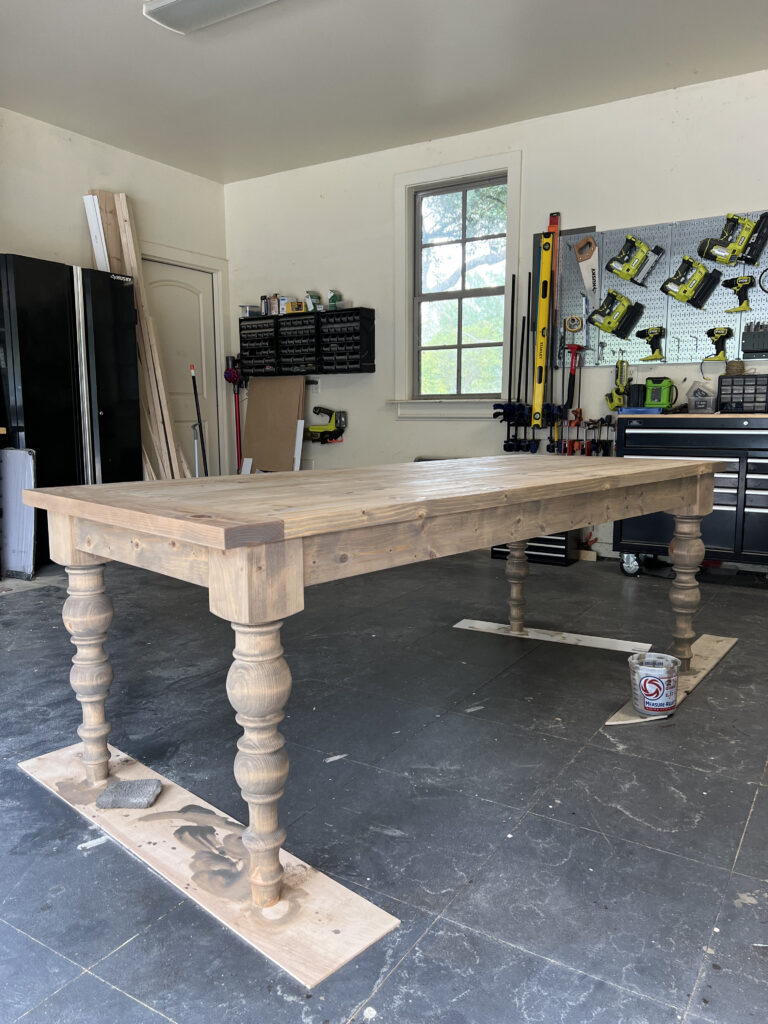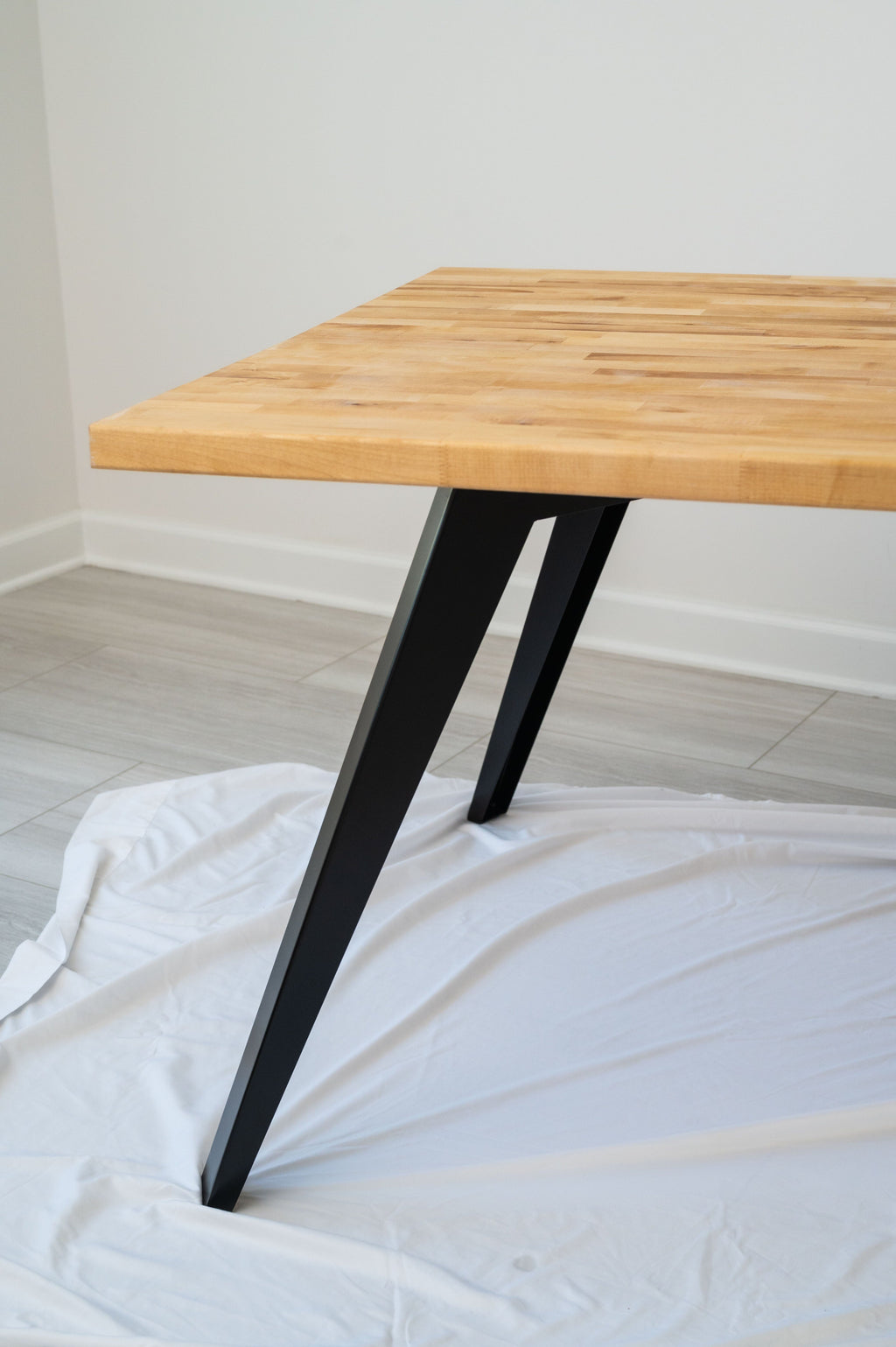What to Think About When Picking Table Legs Timber for Your Home.
When picking wood for dining table legs, a number of crucial factors require mindful consideration to ensure both functionality and aesthetic allure. The kind of timber selected can dramatically influence the table's longevity, stability, and total design, while the maintenance requirements might impact long-lasting use.

Value of Timber Type
When choosing dining table legs, the selection of wood type plays an essential duty in identifying both looks and toughness. Various timber varieties provide differing degrees of stamina, weight, and resistance to wear, which can substantially influence the functionality and durability of the table.
Alternatively, softer woods like poplar or yearn, while more economical, may not supply the exact same level of resilience and may call for more regular maintenance or replacement. The wood kind additionally affects the table's ability to withstand environmental aspects such as humidity and temperature variations. Moreover, the selection of wood can influence the ease of staining and completing, which can be critical for attaining the desired look.
Visual Factors To Consider
The aesthetic appeal of eating table legs significantly adds to the general visual of the eating room. Dining Table Legs Wood. When selecting wood for dining table legs, the grain color, pattern, and surface are essential elements that can boost or take away from the space's layout. Different wood types display differing shades and structures; for example, oak offers a timeless appearance with prominent grain, while walnut provides a rich, dark beauty
Furthermore, the shape of the legs plays an important duty in defining the table's personality. Smooth, minimalist legs can develop a modern feeling, while much more luxuriant, transformed legs evoke conventional beauty. The design of the legs should balance with existing furnishings and the overall style of the room, whether it be rustic, modern, or transitional.
It is additionally vital to think about how the legs engage with other furnishings items, including chairs and sideboards. A natural layout not only boosts the dining experience yet also contributes to the home's overall visual coherence. Eventually, the choice of dining table legs should be a thoughtful decision that reflects individual preference while making sure visual harmony within the space.

Resilience and Stability
Toughness and stability are essential variables in the selection of dining table legs, as they straight affect the durability and security of the furniture. When choosing timber for dining table legs, one have to think about the integral buildings of numerous timber types. Woods, such as oak, maple, and cherry, are typically preferred for their stamina and resistance to use, making them ideal for high-traffic eating locations.
In addition to the kind of wood, the construction method likewise plays a significant duty in the total security of the table. Legs that are well created, either with typical joinery strategies or contemporary design techniques, will provide improved support and avoid tottering. It is important to review the density and layout of the legs; thicker legs are usually a lot more steady and can stand up to greater weight.
Moreover, the environmental problems in which the table will be used can affect resilience. Timber that has actually been properly treated for wetness resistance will certainly execute much better in damp atmospheres. Eventually, selecting the appropriate combination of durable timber and stable building and construction will certainly make sure that your dining table remains a practical and risk-free centerpiece in your house for several years ahead.
Maintenance Demands
Choosing table legs made from sturdy timber is just the beginning; understanding maintenance needs is just as essential to preserve their look and capability. Different wood types need varying levels of care, so it is vital to understand what is required for your details selection.
Regular cleaning is basic; make use of a soft, wet towel to eliminate dust and debris. Prevent extreme chemicals that click can harm the coating. For wood finishes like varnish or lacquer, routine brightening with furnishings wax can improve luster and supply a safety layer versus scrapes.
Preventative steps are crucial (Dining Table Legs Wood). Use placemats and rollercoasters to stay clear of direct call with hot or wet things, which can warp or tarnish the wood. In addition, consider positioning felt pads under the legs to stop scrapes on your floor covering and reduce wear on the wood
Moisture control is another considerable variable; maintaining a steady atmosphere assists to stop bending and breaking. Take into consideration utilizing a humidifier or dehumidifier as needed. if your dining location is prone to fluctuations in temperature and moisture.
Budget and Cost Aspects
When planning to purchase eating table legs, comprehending Homepage spending plan and cost aspects is necessary to make a notified choice. The type of timber chosen for the legs considerably influences the total cost. Woods, such as oak or walnut, often tend to be more expensive than softwoods like yearn, due to their durability, aesthetic allure, and shortage. Additionally, take into consideration whether you are choosing or acquiring pre-made legs for custom-made designs, as modification usually sustains higher costs.
Labor and craftsmanship likewise play a critical duty in the general expense. Handmade or artisan-crafted legs might carry a premium price tag, mirroring the ability and time bought their development. It's vital to assess the balance between high quality and price; investing more upfront can result in a longer-lasting product that needs much less maintenance with time.
Verdict
In recap, choosing the appropriate timber for eating table legs requires careful factor to consider of various aspects, including wood type, visual allure, toughness, budget, and maintenance restrictions. The selection of woods such as oak and maple can improve both strength and visual charm, while softer woods may be much more cost-effective but much less enduring. Eventually, a well-informed decision pertaining to product option will add to the general functionality and longevity of the table, ensuring a valuable investment for the home.
When selecting wood for dining table legs, numerous vital elements warrant mindful factor to consider to make certain both functionality and aesthetic appeal.When selecting dining table legs, the option of timber kind plays an essential function in identifying both aesthetic appeals and resilience. When choosing wood for eating table legs, the grain color, pattern, and coating are essential components that can take away or improve from the area's design. When choosing timber for eating table legs, one need to think about the inherent residential properties of visit this page various timber types.In summary, picking the appropriate wood for eating table legs demands cautious consideration of numerous elements, including timber kind, aesthetic appeal, durability, budget plan, and maintenance constraints.